MCP1702 250 mA Low Quiescent Current LDO Regulator: Circuit, Datasheet pdf and Equivalents
Fixed MCP1702 PMIC TO-226-3, TO-92-3 (TO-226AA)
Unit Price: $0.590565
Ext Price: $0.59









Fixed MCP1702 PMIC TO-226-3, TO-92-3 (TO-226AA)
MCP1702 is a low dropout voltage regulator that can deliver up to 250 mA of current while consuming only 2.0 µA of quiescent current. This article mainly covers datasheet, circuit, pinout, equivalent about 3.3v MCP1702 regulator voltage.

Electronics: How to work with the MCP1702?
- What is MCP1702 Regulator?
- MCP1702 Regulator Pinout
- MCP1702 Regulator CAD Model
- MCP1702 Regulator Functional Block Diagram
- Specifications
- MCP1702 Regulator Features
- MCP1702 Regulator Equivalents
- Alternatives for MCP1702 Regulator
- MCP1702 Regulator Applications
- MCP1702 Regulator Circuit Diagram
- Parts with Similar Specs
- MCP1702 Regulator Dimensions
- MCP1702 Regulator Manufacturer
- Trend Analysis
- Datasheet PDF
What is MCP1702 Regulator?
The MCP1702 is a family of CMOS low dropout (LDO) voltage regulators that can deliver up to 250 mA of current while consuming only 2.0 µA of quiescent current (typical). The input operating range is defined as 2.7V to 13.2V, making it an excellent choice for applications requiring two to six main cells, as well as 9V alkaline and one or two cell Li-Ion batteries.
MCP1702 Regulator Pinout

MCP1702 Regulator Pinout
| pin no. | Pin Name | Description |
| 1 | GND | Ground Pin |
| 2 | Vin | Regulated Voltage Input |
| 3 | Vout | Regulated Voltage Output |
MCP1702 Regulator CAD Model
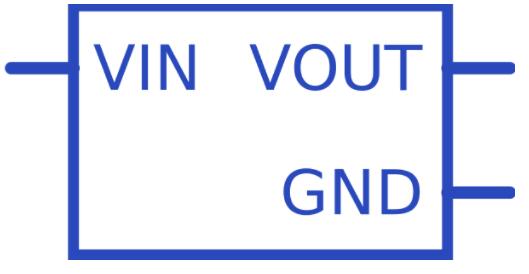
MCP1702 Symbol
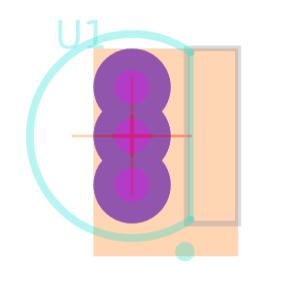
MCP1702 Footprint
MCP1702 Regulator Functional Block Diagram

MCP1702 Regulator Functional Block Diagram
Specifications
- TypeParameter
- Factory Lead Time10 Weeks
- Mount
In electronic components, the term "Mount" typically refers to the method or process of physically attaching or fixing a component onto a circuit board or other electronic device. This can involve soldering, adhesive bonding, or other techniques to secure the component in place. The mounting process is crucial for ensuring proper electrical connections and mechanical stability within the electronic system. Different components may have specific mounting requirements based on their size, shape, and function, and manufacturers provide guidelines for proper mounting procedures to ensure optimal performance and reliability of the electronic device.
Through Hole - Mounting Type
The "Mounting Type" in electronic components refers to the method used to attach or connect a component to a circuit board or other substrate, such as through-hole, surface-mount, or panel mount.
Through Hole - Package / Case
refers to the protective housing that encases an electronic component, providing mechanical support, electrical connections, and thermal management.
TO-226-3, TO-92-3 (TO-226AA) - Number of Pins3
- Operating Temperature
The operating temperature is the range of ambient temperature within which a power supply, or any other electrical equipment, operate in. This ranges from a minimum operating temperature, to a peak or maximum operating temperature, outside which, the power supply may fail.
-40°C~125°C - Packaging
Semiconductor package is a carrier / shell used to contain and cover one or more semiconductor components or integrated circuits. The material of the shell can be metal, plastic, glass or ceramic.
Bulk - Published2006
- JESD-609 Code
The "JESD-609 Code" in electronic components refers to a standardized marking code that indicates the lead-free solder composition and finish of electronic components for compliance with environmental regulations.
e3 - Pbfree Code
The "Pbfree Code" parameter in electronic components refers to the code or marking used to indicate that the component is lead-free. Lead (Pb) is a toxic substance that has been widely used in electronic components for many years, but due to environmental concerns, there has been a shift towards lead-free alternatives. The Pbfree Code helps manufacturers and users easily identify components that do not contain lead, ensuring compliance with regulations and promoting environmentally friendly practices. It is important to pay attention to the Pbfree Code when selecting electronic components to ensure they meet the necessary requirements for lead-free applications.
yes - Part Status
Parts can have many statuses as they progress through the configuration, analysis, review, and approval stages.
Active - Moisture Sensitivity Level (MSL)
Moisture Sensitivity Level (MSL) is a standardized rating that indicates the susceptibility of electronic components, particularly semiconductors, to moisture-induced damage during storage and the soldering process, defining the allowable exposure time to ambient conditions before they require special handling or baking to prevent failures
1 (Unlimited) - Number of Terminations3
- Terminal Finish
Terminal Finish refers to the surface treatment applied to the terminals or leads of electronic components to enhance their performance and longevity. It can improve solderability, corrosion resistance, and overall reliability of the connection in electronic assemblies. Common finishes include nickel, gold, and tin, each possessing distinct properties suitable for various applications. The choice of terminal finish can significantly impact the durability and effectiveness of electronic devices.
Matte Tin (Sn) - annealed - Terminal Position
In electronic components, the term "Terminal Position" refers to the physical location of the connection points on the component where external electrical connections can be made. These connection points, known as terminals, are typically used to attach wires, leads, or other components to the main body of the electronic component. The terminal position is important for ensuring proper connectivity and functionality of the component within a circuit. It is often specified in technical datasheets or component specifications to help designers and engineers understand how to properly integrate the component into their circuit designs.
SINGLE - Base Part Number
The "Base Part Number" (BPN) in electronic components serves a similar purpose to the "Base Product Number." It refers to the primary identifier for a component that captures the essential characteristics shared by a group of similar components. The BPN provides a fundamental way to reference a family or series of components without specifying all the variations and specific details.
MCP1702 - Number of Outputs1
- Voltage - Input (Max)
Voltage - Input (Max) is a parameter in electronic components that specifies the maximum voltage that can be safely applied to the input of the component without causing damage. This parameter is crucial for ensuring the proper functioning and longevity of the component. Exceeding the maximum input voltage can lead to electrical overstress, which may result in permanent damage or failure of the component. It is important to carefully adhere to the specified maximum input voltage to prevent any potential issues and maintain the reliability of the electronic system.
13.2V - Output Voltage
Output voltage is a crucial parameter in electronic components that refers to the voltage level produced by the component as a result of its operation. It represents the electrical potential difference between the output terminal of the component and a reference point, typically ground. The output voltage is a key factor in determining the performance and functionality of the component, as it dictates the level of voltage that will be delivered to the connected circuit or load. It is often specified in datasheets and technical specifications to ensure compatibility and proper functioning within a given system.
3V - Output Type
The "Output Type" parameter in electronic components refers to the type of signal or data that is produced by the component as an output. This parameter specifies the nature of the output signal, such as analog or digital, and can also include details about the voltage levels, current levels, frequency, and other characteristics of the output signal. Understanding the output type of a component is crucial for ensuring compatibility with other components in a circuit or system, as well as for determining how the output signal can be utilized or processed further. In summary, the output type parameter provides essential information about the nature of the signal that is generated by the electronic component as its output.
Fixed - Max Output Current
The maximum current that can be supplied to the load.
250mA - Output Configuration
Output Configuration in electronic components refers to the arrangement or setup of the output pins or terminals of a device. It defines how the output signals are structured and how they interact with external circuits or devices. The output configuration can determine the functionality and compatibility of the component in a circuit design. Common types of output configurations include single-ended, differential, open-drain, and push-pull configurations, each serving different purposes and applications in electronic systems. Understanding the output configuration of a component is crucial for proper integration and operation within a circuit.
Positive - Power Dissipation
the process by which an electronic or electrical device produces heat (energy loss or waste) as an undesirable derivative of its primary action.
644mW - Quiescent Current
The quiescent current is defined as the current level in the amplifier when it is producing an output of zero.
5μA - Accuracy
Accuracy in electronic components refers to the degree to which a measured value agrees with the true or accepted value. It evaluates the precision of a component in providing correct output or measurement under specified conditions. High accuracy indicates minimal deviation from the actual value, while low accuracy shows significant error in measurement. This parameter is crucial in applications where precise data is essential for reliable performance and decision-making.
2 % - Output Voltage 1
Output Voltage 1 is a parameter commonly found in electronic components such as voltage regulators, power supplies, and amplifiers. It refers to the voltage level that is produced or delivered by the component at a specific output terminal or pin. This parameter is crucial for determining the performance and functionality of the component in a circuit. The specified output voltage should meet the requirements of the connected devices or components to ensure proper operation and compatibility. It is important to carefully consider and verify the output voltage 1 specification when selecting and using electronic components in a design or application.
3V - Number of Regulators
A regulator is a mechanism or device that controls something such as pressure, temperature, or fluid flow. The voltage regulator keeps the power level stabilized. A regulator is a mechanism or device that controls something such as pressure, temperature, or fluid flow.
1 - Min Input Voltage
The parameter "Min Input Voltage" in electronic components refers to the minimum voltage level that must be applied to the component for it to operate within its specified parameters. This value is crucial as providing a voltage below this minimum threshold may result in the component malfunctioning or not functioning at all. It is important to adhere to the specified minimum input voltage to ensure the proper operation and longevity of the electronic component. Failure to meet this requirement may lead to potential damage to the component or the overall system in which it is used.
2.7V - Protection Features
Protection features in electronic components refer to the built-in mechanisms or functionalities designed to safeguard the component and the overall system from various external factors or internal faults. These features are crucial for ensuring the reliability, longevity, and safety of the electronic device. Common protection features include overvoltage protection, overcurrent protection, reverse polarity protection, thermal protection, and short-circuit protection. By activating these features when necessary, the electronic component can prevent damage, malfunctions, or hazards that may arise from abnormal operating conditions or unforeseen events. Overall, protection features play a vital role in enhancing the robustness and resilience of electronic components in diverse applications.
Over Current, Over Temperature, Short Circuit - Voltage Dropout (Max)
Voltage Dropout (Max) refers to the minimum voltage difference between the input and output of a voltage regulator or linear power supply needed to maintain proper regulation. It indicates the maximum allowable voltage drop across the device for it to function effectively without dropout. If the input voltage falls below this threshold, the output voltage may drop below the specified level, leading to potential operational issues for connected components. This parameter is critical for ensuring stable and reliable power delivery in electronic circuits.
0.975V @ 250mA - PSRR
PSRR stands for Power Supply Rejection Ratio. It is a measure of how well a device, such as an amplifier or a voltage regulator, can reject variations in the power supply voltage. A high PSRR value indicates that the device is able to maintain its performance even when the power supply voltage fluctuates. This parameter is important in ensuring stable and reliable operation of electronic components, especially in applications where the power supply voltage may not be perfectly regulated. A good PSRR helps to minimize noise and interference in the output signal of the device.
44dB (100Hz) - Dropout Voltage
Dropout voltage is the input-to-output differential voltage at which the circuit ceases to regulate against further reductions in input voltage; this point occurs when the input voltage approaches the output voltage.
625mV - Dropout Voltage1-Nom
Dropout Voltage1-Nom is a parameter commonly found in voltage regulators and power management ICs. It refers to the minimum voltage difference required between the input voltage and the output voltage for the regulator to maintain regulation. In other words, it is the minimum voltage drop that the regulator can handle while still providing a stable output voltage. This parameter is important to consider when designing power supply circuits to ensure that the regulator can operate within its specified voltage range and maintain proper regulation under varying load conditions.
0.25V - Min Output Voltage
Min Output Voltage refers to the lowest voltage level that an electronic component, such as a voltage regulator or power supply, can provide reliably under specified conditions. It indicates the minimum threshold required for proper operation of connected devices. Operating below this voltage may lead to device malfunction or failure to operate as intended.
3V - Voltage Tolerance-Max
Voltage Tolerance-Max is a parameter in electronic components that specifies the maximum allowable deviation from the rated voltage without causing damage or malfunction. It indicates the range within which the component can safely operate without being affected by voltage fluctuations. This parameter is crucial for ensuring the reliability and longevity of the component in various electrical systems. Manufacturers provide this specification to help users understand the limits within which the component can function properly and to prevent potential failures due to overvoltage conditions.
3% - Nominal Output Voltage
Nominal Output Voltage refers to the specified or intended voltage level that an electronic component or device is designed to provide as output under normal operating conditions. It is a crucial parameter that indicates the expected voltage level that the component will deliver to the connected circuit or load. This value is typically specified by the manufacturer and is important for ensuring proper functionality and compatibility within a system. It is important to note that the actual output voltage may vary slightly due to factors such as load variations, temperature changes, and other environmental conditions.
3V - Input Bias Current
Input Bias Current refers to the small amount of current that flows into the input terminals of an electronic component, such as an operational amplifier. It is primarily caused by the input impedance of the device and the characteristics of the transistors within it. This current is crucial in determining the accuracy of the analog signal processing, as it can affect the level of voltage offset and signal integrity in the application. In many precise applications, minimizing input bias current is essential to achieve optimal performance.
2μA - Output Voltage Accuracy
Output voltage accuracy is a crucial parameter in electronic components, especially in devices like voltage regulators and power supplies. It refers to how closely the actual output voltage matches the specified or desired voltage level. This parameter is typically expressed as a percentage of the nominal output voltage. A higher accuracy value indicates that the output voltage is more consistent and reliable, which is important for ensuring proper functioning of electronic circuits and devices. Manufacturers often provide specifications for output voltage accuracy to help users select components that meet their requirements for precision and performance.
2 % - Height4.62mm
- Length4.71mm
- Width3.62mm
- REACH SVHC
The parameter "REACH SVHC" in electronic components refers to the compliance with the Registration, Evaluation, Authorization, and Restriction of Chemicals (REACH) regulation regarding Substances of Very High Concern (SVHC). SVHCs are substances that may have serious effects on human health or the environment, and their use is regulated under REACH to ensure their safe handling and minimize their impact.Manufacturers of electronic components need to declare if their products contain any SVHCs above a certain threshold concentration and provide information on the safe use of these substances. This information allows customers to make informed decisions about the potential risks associated with using the components and take appropriate measures to mitigate any hazards.Ensuring compliance with REACH SVHC requirements is essential for electronics manufacturers to meet regulatory standards, protect human health and the environment, and maintain transparency in their supply chain. It also demonstrates a commitment to sustainability and responsible manufacturing practices in the electronics industry.
No SVHC - Radiation Hardening
Radiation hardening is the process of making electronic components and circuits resistant to damage or malfunction caused by high levels of ionizing radiation, especially for environments in outer space (especially beyond the low Earth orbit), around nuclear reactors and particle accelerators, or during nuclear accidents or nuclear warfare.
No - RoHS Status
RoHS means “Restriction of Certain Hazardous Substances” in the “Hazardous Substances Directive” in electrical and electronic equipment.
ROHS3 Compliant - Lead Free
Lead Free is a term used to describe electronic components that do not contain lead as part of their composition. Lead is a toxic material that can have harmful effects on human health and the environment, so the electronics industry has been moving towards lead-free components to reduce these risks. Lead-free components are typically made using alternative materials such as silver, copper, and tin. Manufacturers must comply with regulations such as the Restriction of Hazardous Substances (RoHS) directive to ensure that their products are lead-free and environmentally friendly.
Lead Free
MCP1702 Regulator Features
• 2.0 µA Quiescent Current (typical)
• Input Operating Voltage Range: 2.7V to 13.2V
• 250 mA Output Current for Output Voltages 2.5V
• 200 mA Output Current for Output Voltages < 2.5V
• Low Dropout (LDO) Voltage
- 625 mV typical @ 250 mA (VOUT = 2.8V)
• 0.4% Typical Output Voltage Tolerance
• Standard Output Voltage Options:
- 1.2V, 1.5V, 1.8V, 2.5V, 2.8V, 3.0V, 3.3V, 4.0V, 5.0V
• Output Voltage Range 1.2V to 5.5V in 0.1V
Increments (50 mV increments available upon request)
• Stable with 1.0 µF to 22 µF Output Capacitor
• Short-Circuit Protection
• Over temperature Protection
MCP1702 Regulator Equivalents
MCP1703, MCP1825, LM317
MCP1702 Regulator Applications
• Battery-powered Devices
• Battery-powered Alarm Circuits
• Smoke Detectors
• CO2 Detectors
• Pagers and Cellular Phones
• Smart Battery Packs
• Low Quiescent Current Voltage Reference
• PDAs
• Digital Cameras
• Microcontroller Power
• Solar-Powered Instruments
• Consumer Products
• Battery Powered Data Loggers
MCP1702 Regulator Circuit Diagram
The MCP1702 low-dropout regulator is packaged in a three-pin package. The voltage regulator is the most common use. It is ideal for many battery-powered applications due to its low quiescent current and low dropout voltage. It's easy to use the MCP1702 as a voltage regulator. Connect the VIN and GND pins to the power source and ground, respectively. At the Vout pin, you can get the regulated output. MCP1702 has a 1.2V to 5V output voltage range. For LDO output stability, a 1f ceramic capacitor is utilized.

MCP1702 Regulator Circuit
Parts with Similar Specs
- ImagePart NumberManufacturerPackage / CaseNumber of PinsNumber of OutputsMax Output CurrentMin Input VoltageVoltage - Input (Max)Min Output VoltageNominal Output VoltageOutput VoltageAccuracyView Compare
MCP1702-3002E/TO
TO-226-3, TO-92-3 (TO-226AA)
3
1
250 mA
2.7 V
13.2V
3 V
3 V
3 V
2 %
TO-226-3, TO-92-3 (TO-226AA)
3
1
250 mA
2.7 V
13.2V
1.8 V
1.8 V
1.8 V
2 %
TO-226-3, TO-92-3 (TO-226AA)
3
1
250 mA
2.7 V
13.2V
2.5 V
2.5 V
2.5 V
2 %
TO-226-3, TO-92-3 (TO-226AA)
3
1
250 mA
2.7 V
13.2V
-
-
2.8 V
2 %
MCP1702 Regulator Dimensions
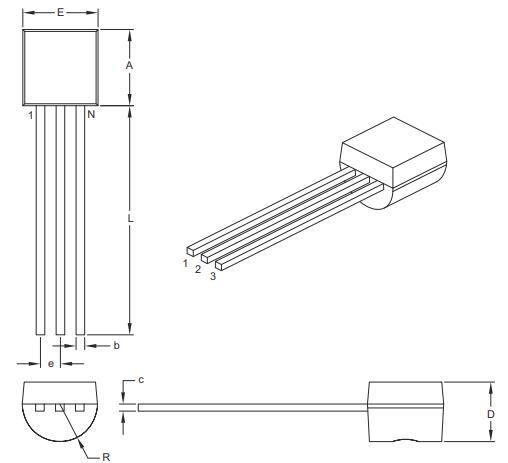
MCP1702 Regulator Dimensions
MCP1702 Regulator Manufacturer
Microchip Technology Inc. is a leader that provides microcontroller and analog semiconductors. The microchip was headquartered in Chandler, Arizona. We are dedicated to offering low-risk product development, reducing total system cost, and accelerating time to market. We mainly serve different fields of customers applications around the world. To provide prominent technical support along with reliable delivery and quality is our goal.
Trend Analysis
Datasheet PDF
- Datasheets :
- ConflictMineralStatement :
What is the use of MCP1702?
The MCP1702 is a family of CMOS low dropout (LDO) voltage regulators that can deliver up to 250 mA of current while consuming only 2.0µA of quiescent current (typical).
What is the input of MCP1702?
The input operating range is specified from 2.7V to 13.2V, making it an ideal choice for two to six primary cell battery-powered applications, 9V alkaline, and one or two cell Li-Ion-powered applications.
What is the voltage of MCP1702?
Output voltages available for the MCP1702 range from 1.2V to 5.0V. The LDO output is stable when using only 1µF of output capacitance.
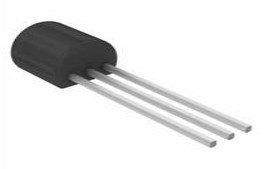 BC637 NPN Transistor: Circuit, Pinout, and Datasheet
BC637 NPN Transistor: Circuit, Pinout, and Datasheet21 April 20222354
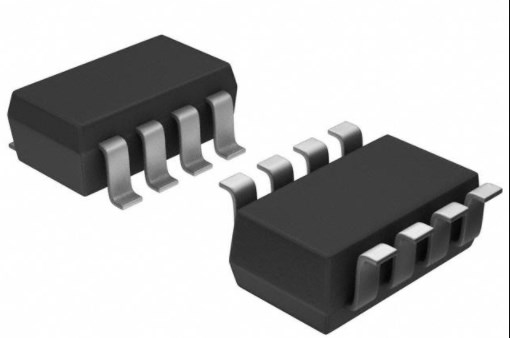 INA219AIDCNR Amplifier: Pinout, Datasheet, INA219
INA219AIDCNR Amplifier: Pinout, Datasheet, INA21910 March 20222108
![PIC18F4520 Microcontroller: Features, Pinout, and Datasheet [Video&FAQ]](https://res.utmel.com/Images/Article/1b537121-21db-4977-8bec-b3192c2ba52b.png) PIC18F4520 Microcontroller: Features, Pinout, and Datasheet [Video&FAQ]
PIC18F4520 Microcontroller: Features, Pinout, and Datasheet [Video&FAQ]29 November 20217591
 25LC640 64K SPI Bus Serial EEPROM: Pinout, Equivalent and Datasheet
25LC640 64K SPI Bus Serial EEPROM: Pinout, Equivalent and Datasheet03 March 20222468
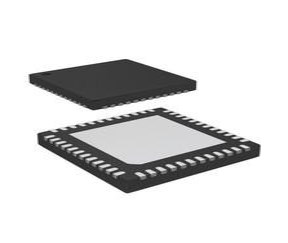 STM32F401CCU6 Microcontroller: 84MHz,48-UFQFN, Pinout and Features
STM32F401CCU6 Microcontroller: 84MHz,48-UFQFN, Pinout and Features08 February 20228406
 MC1488 Line Driver: Pinout, Equivalent and Datasheet
MC1488 Line Driver: Pinout, Equivalent and Datasheet04 November 20211977
![A General Introduction to BMX055 [Faq]](https://res.utmel.com/Images/Article/d62f1040-06a8-4a63-aaf9-208b94cf45a1.jpg) A General Introduction to BMX055 [Faq]
A General Introduction to BMX055 [Faq]20 April 20221415
 LM317 vs IRFZ44N Mosfet: Who works better?
LM317 vs IRFZ44N Mosfet: Who works better?03 August 202211697
 Introduction to Microprocessors
Introduction to Microprocessors18 August 202016285
 What is an Instrumentation Amplifier?
What is an Instrumentation Amplifier?27 March 202510988
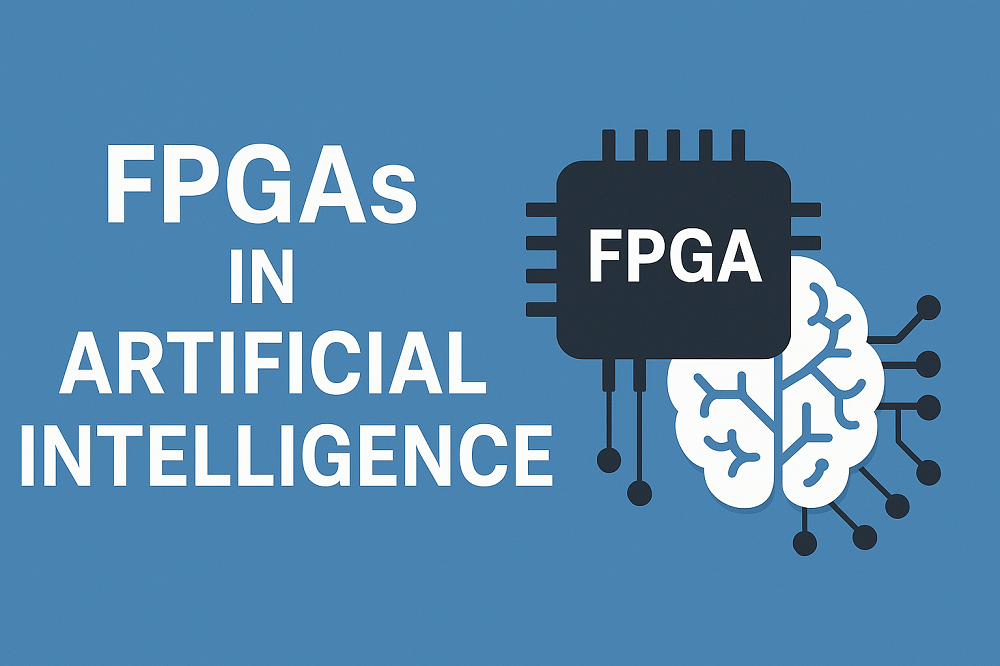 Applications of FPGAs in Artificial Intelligence: A Comprehensive Guide
Applications of FPGAs in Artificial Intelligence: A Comprehensive Guide29 August 20251464
 What is a SAW Sensor? Types, Working and Applications
What is a SAW Sensor? Types, Working and Applications29 March 202118280
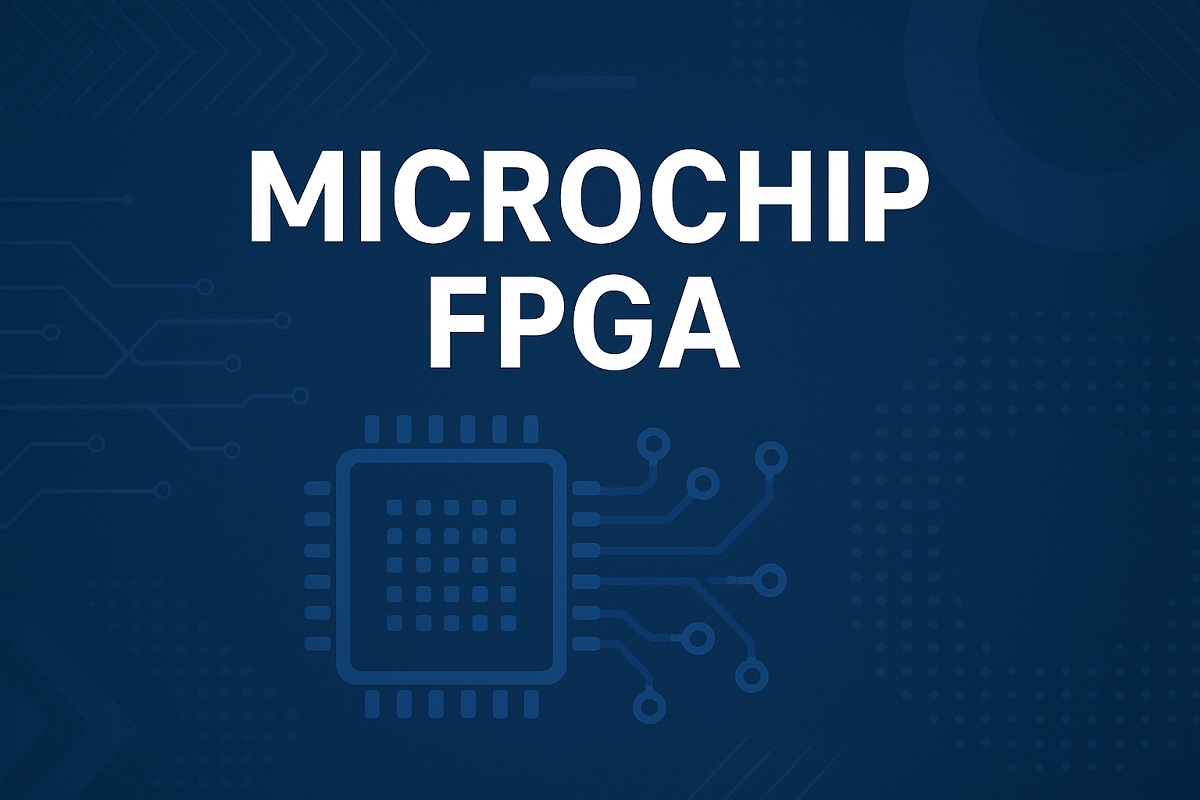 Microchip FPGA Solutions: Aerospace and Industrial Applications
Microchip FPGA Solutions: Aerospace and Industrial Applications09 June 2025373
 Humidity Sensor: Classification, Package and Application
Humidity Sensor: Classification, Package and Application13 November 20253701
 MIT Technology Review Officially Released 2022 Top 10 Breakthrough Technologies in the World
MIT Technology Review Officially Released 2022 Top 10 Breakthrough Technologies in the World26 April 20224696
 What is LED Drive Power?
What is LED Drive Power?18 March 2022709
Microchip Technology
In Stock: 4838
Minimum: 1 Multiples: 1
Qty
Unit Price
Ext Price
1
$0.590565
$0.59
10
$0.557137
$5.57
100
$0.525601
$52.56
500
$0.495850
$247.92
1000
$0.467783
$467.78
Not the price you want? Send RFQ Now and we'll contact you ASAP.
Inquire for More Quantity






